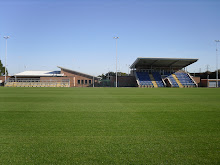A recent survey of 33,425 people has revealed that Great Britain's most popular city to relocate to is Inverness. The recent economic climate has meant that many people want to escape the hustle and bustle of big city life in places like London and Birmingham for a more peaceful existence, and the Highland capital tops the list of favourable places to live, ahead of Bournemouth, Torquay, Ipswich and Norwich.
Inverness is considered one of the fastest growing and developing cities in the whole of Europe. It is home to approximately a third of the population in the Scottish Highlands, with many people living in and around the city. With the Cairngorm mountain range and ski resort of Aviemore to the south, Loch Ness to the west, the Moray Firth to the east, and the picturesque Black Isle to the north, Inverness is central to an area of outstanding natural beauty and endless options for holidays, extreme sports and activities. The city itself is a great place to live, with one of the lowest crime ratings and best school results in the UK. Unlike the big cities, it doesn't feel dirty and crowded. The citizens are generally friendly and helpful, as I found when I got lost looking for the hostel I was staying in.
The city's airport is served by a shuttle bus that runs between the airport and the city centre. The Kessock Bridge which carries the A9 trunk road over the water where the Moray and Beauly Firth's meet has transformed road transport in the Highlands and one of the key factors that has lead to the prominent growth of Inverness as a city. The city has also received an image boost in recent years with the success of the city's main football team, Inverness Caledonian Thistle. The club was formed in 1994 by the merger of 2 teams that used to play in the city, Inverness Thistle FC and Caledonian FC. Starting at the lowest level of Scottish League football, they worked their way up through the divisions, culminating in promotion to the Scottish Premier League. 5 years at the top level, and impressive victories over the biggest teams in the country, Glasgow giants Celtic and Rangers, meant the club rose in prominence. The club were relegated in 2009 but bounced straight back the following year and are now back among Scotland's elite. The city also benefitted as a result of the club's fortunes.
The surrounding area is one of the most spectacular landscapes in the whole of Europe, let alone the UK. The Moray Firth is home to the UK's most northerly population of Bottlenose Dolphins. The dolphins are a major tourist attraction, with dolphin-spotting boats sailing from Inverness and the village of Avoch on the Black Isle taking visitors out into the Firth to look for the animals. Chanonry Point, a small peninsula on the Black Isle, is regarded as the best spot in Europe to see wild dolphins from the land. With the deep channel that the dolphins hunt in coming less than 100 yards offshore, it feels as if you can almost reach out and touch them as they swim past, looking for fish and leaping from the water. The Cairngorms and Aviemore to the south appeal to everyone. From skiing and snowboarding, to wildlife watching and hiking, there is an abundance of activities and pastimes to be enjoyed here. Loch Ness, of course, needs no introduction. Just 10 miles from Inverness, the Loch is famous worldwide for it's mysterious inhabitant, the Loch Ness Monster. Boat cruises sail from the town of Drumnadrochit on the Loch's northern shore, and an exhibition in the town itself about the history and mystery of 'Nessie' should satisfy any keen monster seeking tourists. All in all, Inverness sounds like a bloody good place to live, right?
But that is my problem. With the city being projected as it has been in recent years, more and more people will want to move there. This will mean more housing being built on landscape that should be left well alone. It will mean an increase in unemployment rates in the city. This in turn will lead to a higher crime rate. The city will become overpopulated and that means more vehicles on the roads in and around the city, and more pollution. The tranquility of the surrounding area will be gone. Locals who have lived in the area all their lives will be forced out, or made to live in a less favourable community. The increase in population will lead to a greater demand for natural resources and fossil fuels. This will most probably mean permission is given to drill for oil within the Moray Firth, eventually driving away the dolphins, seals and other marine wildlife that have lived in the area for hundreds of years and been a major tourist attraction and source of income for local communities. The Inverness way of life could come to an end, maybe very quickly, maybe it will take years, but it will not end well.
I thought I was pleased that the City of Inverness and the Scottish Highlands were finally getting the recognition and praise they deserved. But now I'm not so sure it's a good thing.
Tuesday, 21 September 2010
Subscribe to:
Posts (Atom)
